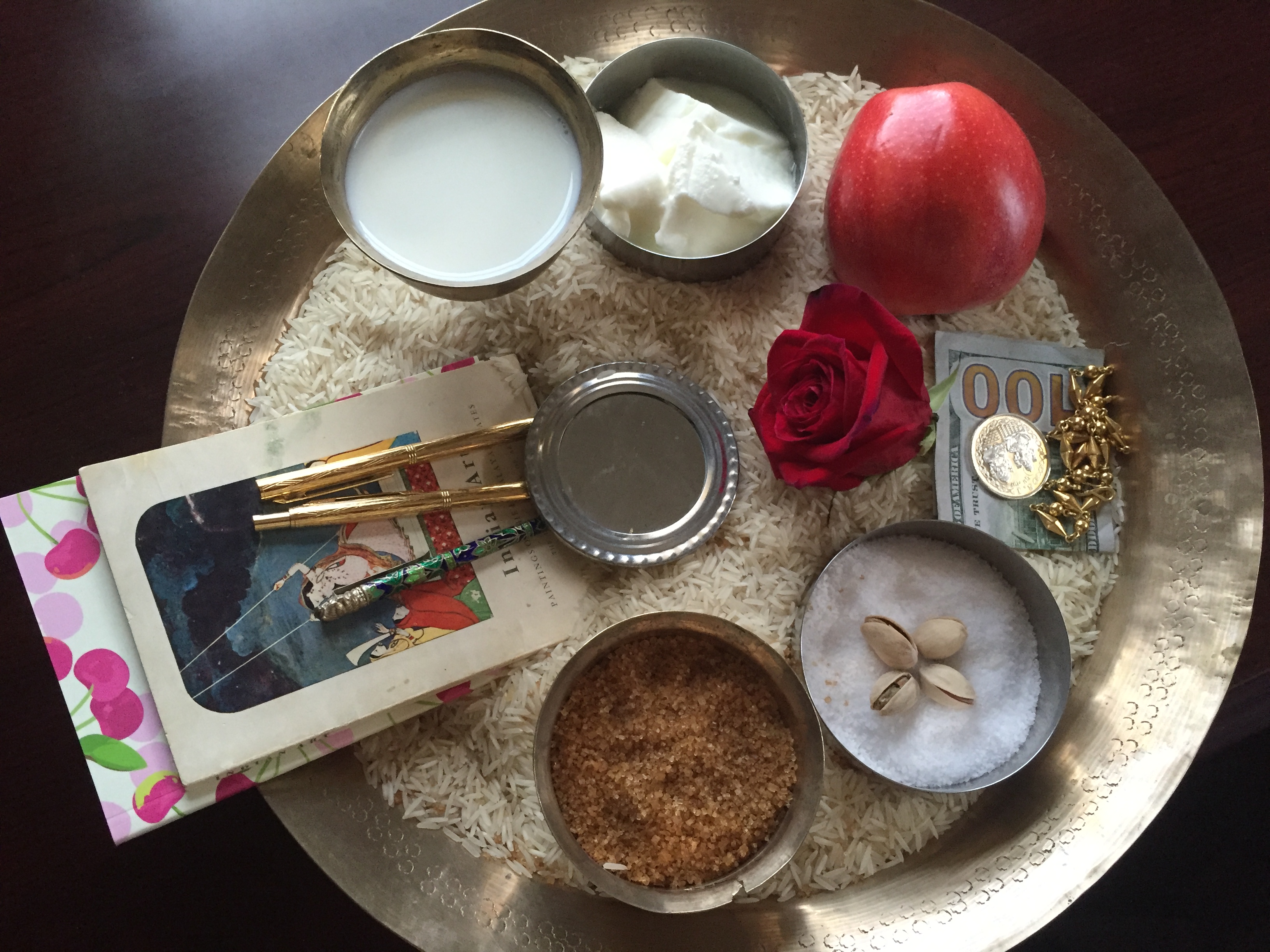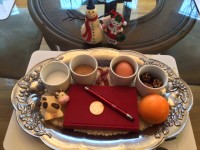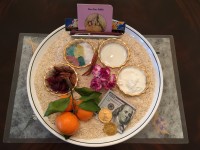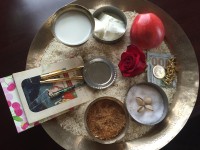
Welcoming 2016 With Three Thals!
Dear Readers and Friends,



Happy New Year with these ‘Thals’ (Platters) of Blessings! May 2016 be filled with warmth of the family, joy in day-to-day life and adventure of life opening up to you!
Many of you, who saw our family thal posted on various social media, wanted to know the meaning of the things placed in the bowls and on rice. Here is an excerpt from my forthcoming novel, “THE IMMIGRANT WIFE: A SPIRITUAL JOURNEY (April 2016) that explains the significance of these items.
Christmas Day turned out to be better than Shanti could have imagined. She had prepared flavorful dishes for her family and they had savored them. They had exchanged gifts and had seen, done, and learned a million things in the new country. She hoped her resilience would eventually attract positivity to her family circle, particularly to her husband, Satyavan.
Christmas festivities and warmth continued until the last day of the year. Late that night after the family watched the countdown and the ball come down in New York, after the rest of them went to sleep, Shanti sat on the sofa staring at the black television screen.
Images of Maji filling the thal, bronze platter, appeared to her mind’s eye. The platter was passed down to Maji from her grandmother so she used it only for special occasions. Filling the thal was called ‘Thal Barun’ and looking at it the next morning, ‘Buth Vuchun.’ On the eve of the New Year, Maji filled the thal with uncooked rice and snugly placed different items over it; each item had special significance. In the wee morning hours she awoke each family member to show them the thal so that they would usher in the year with grace. After Shanti got married, she did not continue the tradition. Now was the time to begin. She got up and went to the kitchen.
Shanti selected a decorative serving plate. She filled it with grains of uncooked rice symbolizing sustenance and abundance. She collected four small bowls, nestled them in the rice and filled one with milk and one with yogurt. The transformation from milk to yogurt symbolized the method, the time and the patience it required for any task to be completed, for something to mature. Raw and dry walnuts expressed similar idea, as she had neither, she replaced them with an apple and dry apricots.
She filled the third bowl with sugar and the last one with salt and placed a tamarind pod and a couple of red chilies next to it. Sweet, salty, sour and hot represented emotional experiences one was bound to encounter through the year and they were to be faced fearlessly. To these items she also added a miniature book, a notepad, pencil and pen for success in education, learning and gaining wisdom.
The last item was a small round mirror with a decorative silver frame. Maji said that the rite of looking at one’s face, ‘Buth Vuchun,’ was the most meaningful rite of the year. At that time, Shanti did not understand its significance. But now she knew that the mirror was not to see her face but to try to see the true Self within. As a final touch she added a twig of red Christmas berries that she had brought in earlier. Having thus filled the thal she covered it with a brand new dishtowel and went to bed, exhilarated.
In the morning, Shanti woke up eagerly and carried out the thal from the kitchen. She awoke first Nilu then Amu and finally Satyavan. To each one she explained what it meant. They woke up moaning and yawning but by the time she was finished explaining what it meant, they caught her enthusiasm.
The year’s new family tradition made Nilu and Amu’s eyes glint with learning, and surprisingly was welcomed by Satyavan. Shanti felt its warmth, and Maji’s love, throughout her home for the whole day.


Wg Cdr SA ramaiah
Madhuji,
Your write up on three thals is good and indeed informative through the excerpt of your new book. Thank you!
Best wishes for the New Year, 2016.
Shubkamanaye
Aapaka Ramaiah